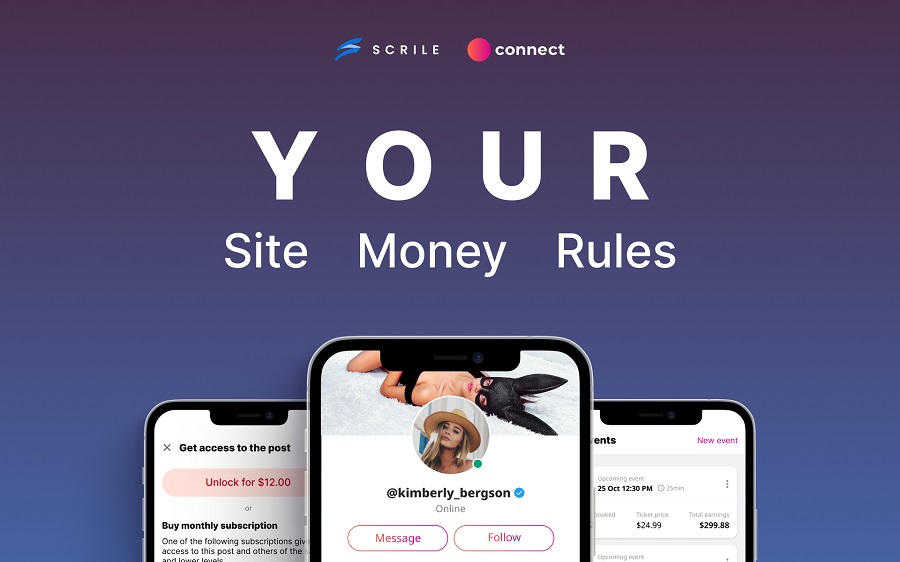How to Start a Fundraiser Online in 2025
Learn how to start a fundraiser online in 2025 with proven digital fundraising ideas, real examples, and scalable strategies. This guide covers campaign setup, promotion, monetization, and why building your own platform with Scrile Connect gives you full control.
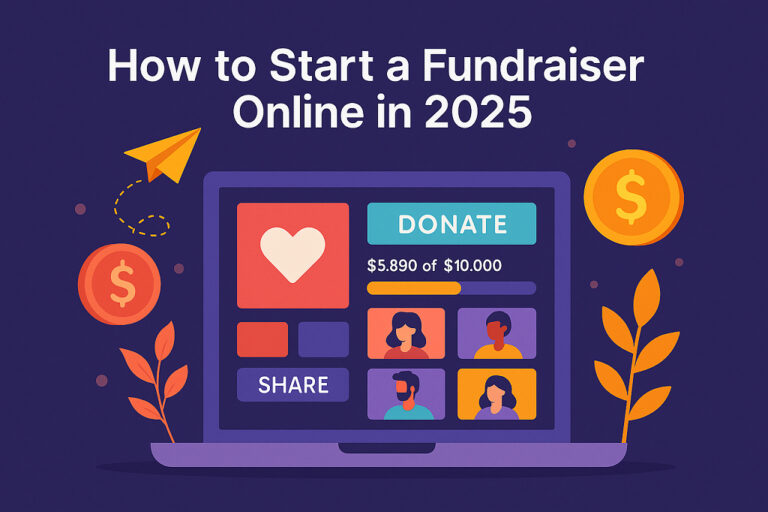
how to start a fundraiser online
Let’s be honest — slapping a donation link on your website and calling it a “campaign” just doesn’t cut it anymore. In 2025, people don’t give money because they can — they give because they care. And that takes more than a payment form.
The most effective online fundraisers today are part content studio, part mission statement, and part community hub. It’s not just about collecting donations. It’s about telling a story people want to follow, showing impact as it happens, and building trust with every update.
So if you’re wondering how to start a fundraiser online, it’s not about choosing the right platform — it’s about building the right presence. Whether you’re rallying support for a medical emergency, local community project, activist cause, or creative mission, you need the tools to run it on your terms.
This guide breaks it all down — what works, what doesn’t, and what you need to actually raise money in 2025. And if you’re aiming to go beyond a single campaign? A service like Scrile Connect lets you build a fully branded fundraising site that grows with your supporters — not someone else’s terms.
Find Your Purpose, Frame Your Pitch

Before you launch any campaign, you need to ask the one question most people skip: why should anyone care?
When you’re figuring out how to fundraise, it’s tempting to rush into setting up a page and promoting it. But a successful fundraiser doesn’t start with tools — it starts with clarity. What exactly are you raising money for? Who benefits? Why now?
Not all fundraisers are built the same. A personal fundraiser for medical bills runs differently than a local project to renovate a playground or a creator-led campaign to produce community-backed content. Even within nonprofits, the approach will vary based on audience size and goals. If you don’t define your category, you won’t find your audience.
Equally important is framing the story. A good pitch isn’t a sales letter — it’s a personal connection. It should focus less on asking for money and more on sharing why the mission matters. Your origin story — how this came to be, what’s at stake, and how support changes things — is where you turn strangers into backers.
Think short, specific, and emotional. Add real photos and names to make it personal. Create a sense of urgency through goals and timeframes—not by guilt-tripping. Let donors see exactly where their support goes. And make your first paragraph count. Most people will decide to donate (or not) after the first 10 seconds.
Work Smarter with Fundraising Psychology
Once your purpose is locked in and your story is solid, it’s time to understand how donations actually happen. Knowing how to start a fundraiser online isn’t just about the tools — it’s about people.
Let’s talk about the 80/20 rule. It shows up everywhere in fundraising. About 80% of your funds will come from 20% of your donors. That means your job isn’t just to reach more people — it’s to identify and nurture those few who can contribute meaningfully. Don’t treat every supporter the same. Focus on building deeper relationships with your core backers.
That’s where the 3 C’s of fundraising come in:
- Commitment – Are they already involved with your mission, brand, or story?
- Connection – Do they have a personal tie to the cause or to you?
- Capacity – Can they realistically give at the level you need?
These three factors help you prioritize. Spend more energy on people who check all three boxes. It’s not about being exclusive — it’s about using limited time effectively.
Here’s the key: Most fundraisers don’t fail because they lack traffic. They fail because they don’t convert. Your top donors won’t find you by accident. You’ll need to reach out personally, follow up, and make it easy for them to say yes.
That’s how to start a fundraiser online that doesn’t just get clicks — it gets real support
Choose a Fundraising Model That Matches Your Goals

If you’re trying to figure out how to start a fundraiser online, don’t start with the tools — start with the business model. It’s not enough to put up a donation link. Your approach needs to reflect your audience, your content, and the kind of engagement you want to build.
Some causes work best with fast, one-time contributions — think emergency funds, short-term community relief, or medical costs. Others need something ongoing: monthly support for a nonprofit, ticket sales for digital events, or regular content updates that make people feel involved.
Here’s a breakdown of the four main models used in 2025:
- One-time donations — Still the easiest entry point, especially for friends and family campaigns. But it can feel transactional unless you follow up with meaningful updates.
- Recurring support — Think memberships, subscriptions, or Patreon-style tiers. These keep your backers engaged and help you forecast income month to month.
- Event-based fundraising — Livestreams, ticketed talks, or virtual meetups are all ways to tie value to support. This works especially well when your audience wants to participate, not just donate.
- Content-powered campaigns — Gated blog posts, exclusive videos, or milestone-driven updates can bring in donations as people follow your story.
Which Model Fits Your Fundraising Goals?
Choosing the right model depends on what you’re raising money for — and how long you expect support to last. For example:
- Creators and educators often benefit from a subscription model where supporters get access to exclusive content over time.
- Medical or urgent causes might need a fast, one-time fundraising push with a clear financial goal and deadline.
- Community or advocacy efforts can build momentum through events, gathering people together for a livestream, panel, or interactive workshop.
- Cause-based influencers often thrive using a hybrid approach, combining content updates, tiered perks, and ongoing community engagement.
The key is matching the user experience to donor expectations. Some visitors come for the story—keep them engaged with updates and milestones. Others want to get involved—offer livestreams or interactive events. And for those who prefer to give quietly, make donating fast and frictionless.
No single model fits every cause. Many campaigns evolve — starting as donation-only, then adding content or events. That’s where flexibility matters.
Set Up Your Campaign or Platform
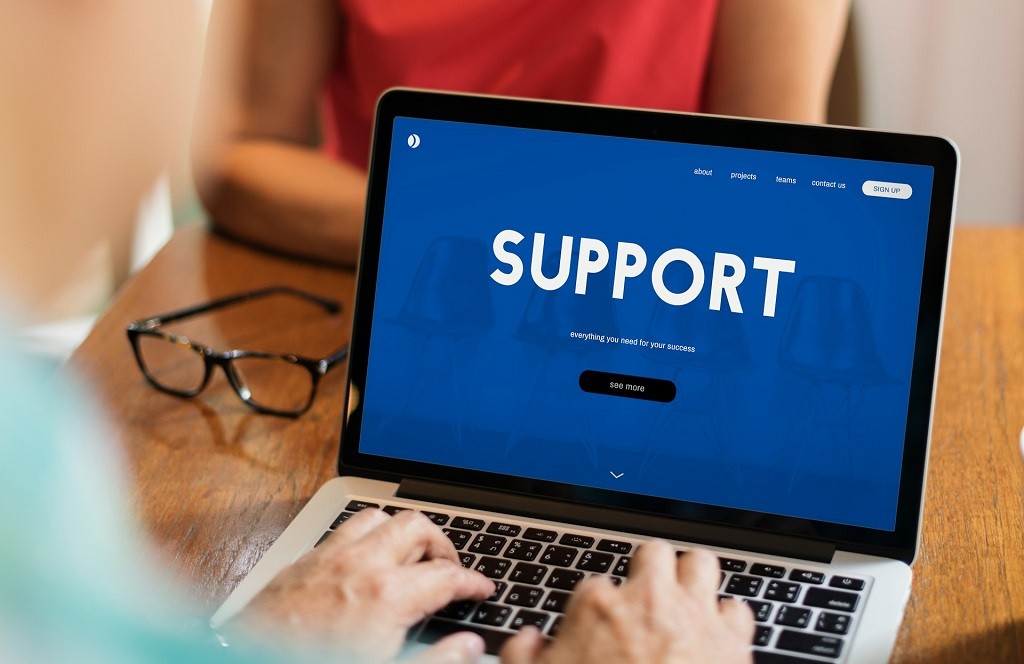
The way your fundraiser appears at launch can determine whether visitors stay and give—or bounce in five seconds. It’s not about flashy graphics or emotional oversell. The key is trust, clarity, and flow.
You’re not just posting a donation link. You’re asking people to care, act, and share. That means the campaign page needs to answer three silent questions instantly: What’s this about? Why now? Why should I trust it?
That starts with your core narrative. It doesn’t have to be dramatic. It has to be personal. Talk about who you are, what’s at stake, and how the funds will make a difference. Real photos beat stock images every time. Direct, simple language outperforms overworked prose.
But purpose alone won’t make people click. You also need structure. A good campaign page flows like a story: headline, short video or image, mission summary, donation tiers, and updates. Many creators add small incentives like a name shoutout or exclusive content, but these must fit your voice. Don’t add perks that feel disconnected.
Building Urgency and Legitimacy
Two things move donors from “maybe later” to “I’ll give now”: a sense of time pressure, and visible proof of credibility.
Deadlines are effective. Set a realistic end date and say why it matters. Not “soon” — give specifics. (“We need to fund this surgery by October 10.”) A countdown clock or milestone bar adds extra motivation.
Then there’s legitimacy. People want to believe their money won’t disappear. Add your full name or team bio, explain where funds go, and update often. Seeing progress or setbacks in real time keeps interest high and trust intact.
What a Great Campaign Page Actually Includes
Think of your campaign page as your storefront. It’s where you convince someone to stop scrolling, stay a while, and ultimately give. The best pages don’t overwhelm—they connect. Clean layout, strong visuals, and a clear message always win.
First, get your story across fast. Attention spans are short, so lead with clarity. Use a short headline that tells people what you’re doing and why it matters. Beneath that, keep your story personal—talk like a real person, not a press release.
And don’t skip the video. A simple 45–60 second clip—on your phone, in natural light—is enough to build trust. It shows your face, your voice, your passion. People give to people.
Next, include suggested donation tiers. These anchor people’s choices and help them see their impact clearly. Here’s what a simple tier layout could look like:
- $10 — Covers one day of meals for a community member
- $25 — Supports a week of transport or outreach
- $50 — Funds one full production of campaign media
- $100+ — Major backer status with updates and recognition
Then add strong visual elements—photos, icons, a dynamic progress bar. You’re not just asking for money. You’re showing what that money does. The page should answer the silent question: “Where does my donation go?”
And finally, always keep updating. Whether through a timeline, media posts, or thank-you notes, keep people engaged. If you’re using a custom solution, it’s easier to house everything in one place. But even on a hosted platform, being responsive goes a long way.
Mastering how to start an online fundraiser starts with trust. Your page isn’t just a donation portal—it’s the heartbeat of your campaign. Treat it like your digital handshake.
Comparison Table: Fundraising Platforms vs. Custom Builds
| Platform | Setup Time | Customization | Fees | Best For | Ownership |
| GoFundMe | 1 hour | Low | 0–5% | Personal/emergency cases | None |
| Donorbox | 1 day | Medium | 1.5–3.5% | Nonprofits with recurring needs | Limited |
| Givebutter | 1 day | Medium | 0% + tips | Peer-to-peer, school events | Limited |
| Kickstarter | 3–5 days | Low | 5% + Stripe | Product-based, one-time goals | None |
| Patreon | 1–2 days | Medium | 8–12% | Creators, recurring content | Limited |
| BetterWorld | 1 day | Medium | 0% (donor tip) | Auctions, giveaways, creators | Limited |
| Scrile Connect | 2–4 weeks | Full | Fixed/month | Branded fundraising platforms | Full |
Build Momentum and Community
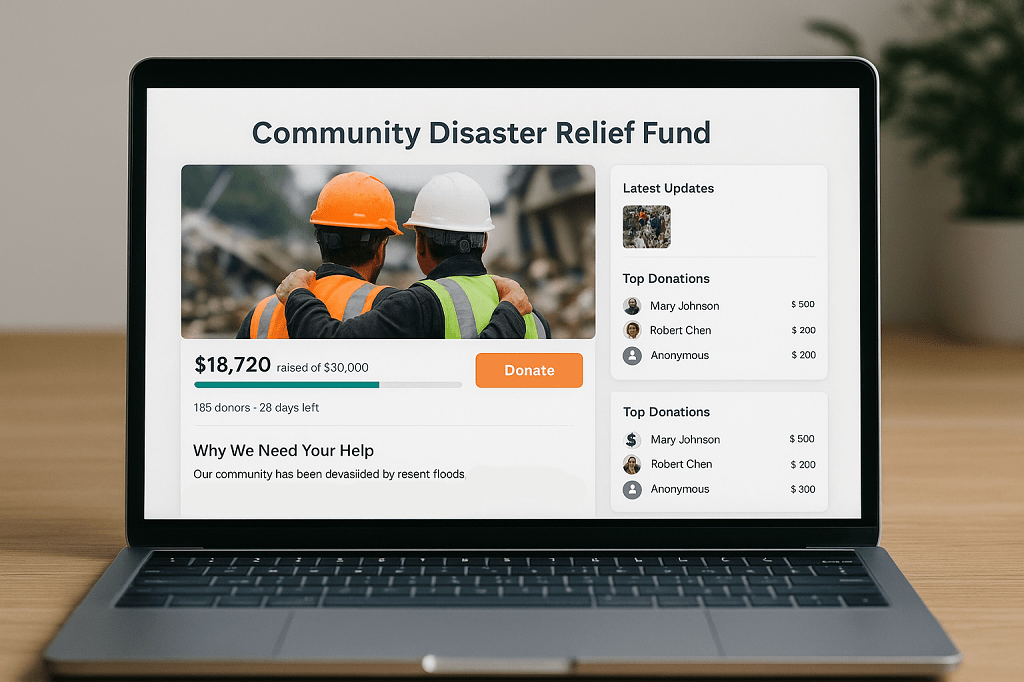
It’s tempting to jump straight into posting donation links and sharing your campaign everywhere. But here’s the thing: momentum comes before money. That means before you ask for public support, you need a small circle of early believers.
The first 10–20% of your total goal should come from people who know you—or know your mission. This could be close friends, family, former donors, or early backers from a previous campaign. These people form the social proof that convinces strangers your project is real, urgent, and worth supporting.
This strategy is known as a “soft launch.” Before you go live to the world, share your private campaign link with your inner circle. Ask for feedback, and get the first few contributions rolling. A fundraiser that’s already gained traction is more likely to convert new visitors—it feels alive.
If you’re learning how to fundraise online for the first time, this part may seem like a delay. But it’s not. It’s how smart campaigns frontload energy.
After the soft launch, the next step is preparing your community infrastructure. Don’t just rely on Instagram posts and tweet storms. Think smaller—think deeper. Set up:
- A basic email list, even just using Mailchimp or Substack
- A private chat (Telegram, Discord, or WhatsApp) for insiders
- A feedback form or update thread that invites participation
These tools turn one-time visitors into supporters who stick around.
Keep Donors Engaged After They Give
Once someone contributes, the real work begins. The difference between a one-time donor and a long-term supporter often comes down to what happens after the first donation.
Don’t let that moment go cold.
Follow up personally where possible, and use your messaging channels to make them feel part of the journey. A donation shouldn’t feel like a transaction—it should feel like a ticket into something meaningful.
One proven strategy is to build momentum through transparent updates. Let people see how their money is being used. That could be:
- A short video showing supplies you’ve bought
- A screenshot of your progress dashboard
- A milestone chart (e.g., “We’ve raised 60%!”)
- A thank-you post naming contributors (with their permission)
These small actions create a sense of shared ownership. That’s how supporters turn into repeat donors.
If you’re asking how to do a virtual fundraiser that doesn’t fizzle out in week two, the secret is to stay consistently visible. Not pushy, but present.
Mix formats to keep interest alive—short-form posts, livestream check-ins, even polls or behind-the-scenes photos. Use what fits your tone and your audience.
And don’t overlook advocacy. Your top donors might not give again right away, but they can still spread the word. Give them ready-made tools: sample social media captions, images to share, or a referral link that tracks how many people they bring in.
When your community feels empowered, not just asked, they’ll help carry the message further than any ad budget could.
Promote Like a Creator

Let’s get something clear: just launching a campaign isn’t enough. You need promotion — and you need it to cut through the noise.
That doesn’t mean dumping money into ads from day one. Start with organic reach. Your network, your story, your early supporters — that’s where momentum begins.
Organic online fundraising ideas that work in 2025:
- Post short-form videos on platforms like TikTok and Instagram Reels — behind-the-scenes updates, countdowns, or personal appeals.
- Share testimonials from previous donors, volunteers, or people impacted by the fundraiser.
- Use Twitter threads, Reddit posts, or Facebook groups to tap into niche communities interested in your cause.
These content formats aren’t just trendy. They work because they create connection. People give when they feel something.
Email marketing still plays a key role, too. Even in the age of social media, an engaged email list can be your most reliable asset. Focus your first few emails on urgency and transparency — why now, and where the money goes.
Then there’s the UGC angle. Encourage your supporters to post their own videos or stories about why they care. Offer them hashtags, visuals, or even giveaway incentives. If 10 people post instead of one, your reach multiplies — no ad budget needed.
The 50/30/20 Rule of Donor Spending
If you want people to give, you need to understand how they think about money.
According to personal finance experts, the 50/30/20 rule is a common budgeting framework:
- 50% of income goes to essentials — rent, food, bills.
- 30% covers wants — entertainment, lifestyle extras.
- 20% is reserved for savings and giving.
Your fundraiser doesn’t compete with rent. It competes with Netflix, subscriptions, and shopping carts. That means your ask needs to feel personal, urgent, and rewarding.
This is especially true when you’re learning how to do a virtual fundraiser. People donate online for two reasons: emotional impact and social value. They want to be part of something, and they want to feel their contribution matters.
That’s where limited-time goals, progress meters, and shoutouts help. Create milestones — “Help us hit $1,000 by Friday” — and tie them to real outcomes. Show what changes with each level of support.
Also, consider micro-influencers. A creator with 10,000 followers who genuinely cares about your cause can drive more action than a celebrity plug. Offer them branded assets, talking points, or even donation-matching promos.
Promotion is not about spamming — it’s about storytelling, strategy, and making giving feel good. With the right timing, message, and platform presence, your fundraiser becomes part of someone’s day — not just another link.
Make Transparency Part of the Story

If you’re wondering how to start a fundraiser online that doesn’t just raise money — but builds loyalty — the secret is visibility.
Donors today want more than a thank-you email. They want to see their impact. They want to feel like part of the mission. Transparency isn’t just a bonus — it’s a strategy. Real-time updates give people confidence their money isn’t vanishing into a void. The result? Better engagement, more repeat support, and higher average donations.
That’s where rich media updates shine. Instead of writing “we reached $5,000,” show a short video from the field, or a before-and-after shot of what those funds achieved. When supporters feel part of the progress, they’re more likely to come back and even bring others along.
Real Tools for Real-Time Trust
Here are a few simple but powerful tools that make transparency automatic:
- Progress bars: Don’t just say “we’re halfway there” — show it.
- Unlocked milestones: Set donation goals that reveal new media or perks as you hit each one.
- Donor shoutouts: Publicly thank supporters, especially recurring ones, to build social proof.
- Live counters: Track number of supporters, funds raised, or hours left to reach the goal.
- Update feeds: Add new videos, notes, or pictures each week — like a blog that evolves with the fundraiser.
This is where digital fundraising ideas become more than gimmicks. They build momentum. And if you’re using a development service like Scrile Connect, these tools are fully customizable — whether you’re running a charity campaign or launching a community project with livestreams, merch, or recurring backers.
Transparency doesn’t just increase trust — it creates an experience that supporters want to be part of. Let them see their names, their dollars, and their influence. Because in 2025, fundraising is no longer passive. It’s personal, social, and transparent by design.
Why Scrile Connect Is Built for Fundraising 2.0
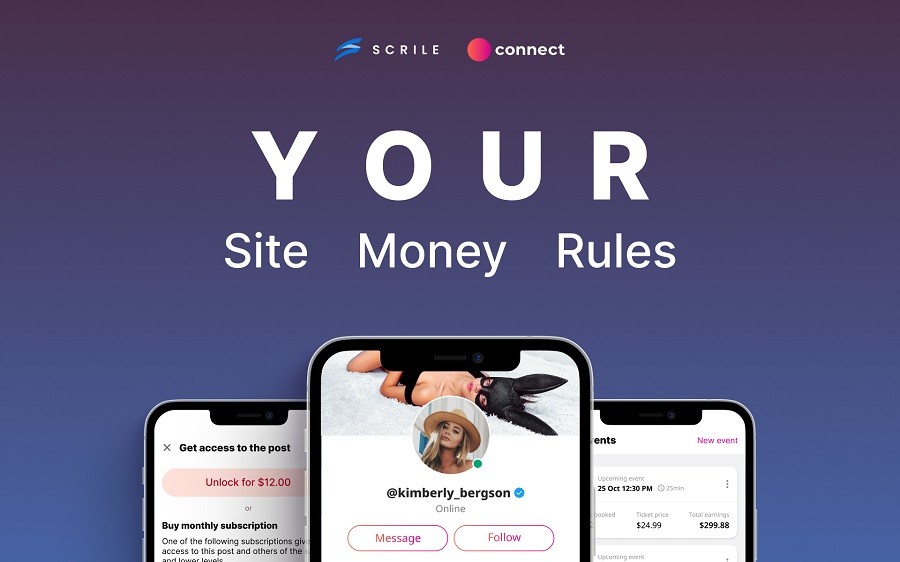
Most platforms give you one-size-fits-all campaigns. Scrile Connect gives you something better — a fundraising brand.
If you’re serious about learning how to start a fundraiser online and make it sustainable, you don’t just need a donation button — you need a system. Scrile Connect doesn’t lock you into rigid templates or workflows. It gives you total control over your site’s layout, domain, onboarding experience, and payment model.
You can design every page around your story. Choose how users register, where calls to action appear, how content is gated or public, and how payments are handled — from Stripe to crypto wallets. Whether you’re hosting a one-off appeal or launching a media-driven nonprofit, Scrile Connect grows with you.
And monetization? It’s baked in from day one.
You can mix and match:
- One-time donations
- Recurring memberships
- Exclusive content unlocks
- Ticketed live streams or events
- Donation tiers with custom perks
This means you’re not limited to just “raise funds.” You can build a funding engine around content, community, and cause.
Scrile Connect also supports geotargeting, donor analytics, milestone tracking, and built-in media tools — everything you need to engage users like a modern content brand, not just a static donation page.
It’s particularly powerful for:
- Nonprofits that want to go beyond third-party platforms and own their infrastructure
- Creators building cause-driven communities around personal stories, impact journalism, or mission-based media
- Local organizations that need location-aware campaigns with real-world updates and flexible monetization
So if you’ve outgrown the basics and want to launch something serious — your own GoFundMe alternative, a niche donor community, or a content-powered cause — head to Scrile Connect and explore what you can build.
Because Scrile Connect isn’t just another fundraising platform. It’s your infrastructure for long-term digital impact.
Conclusion: Start Smart, Grow Big
In 2025, how to start a fundraiser online isn’t some mystery wrapped in red tape. You don’t need a big budget, a registered nonprofit, or a media team. What you do need is a clear purpose, the right tools, and a way to keep people engaged.
The best fundraisers don’t just collect money — they tell stories, build community, and offer real transparency. And if you want to do more than run a single campaign, you need infrastructure that can scale with your ambition.
That’s where Scrile Connect comes in. It’s not just a tool — it’s a way to launch a full-featured, branded fundraising platform built around your needs. Whether you’re an independent creator, a local cause, or a global mission, you get full control of content, monetization, and community engagement.
Ready to build something bigger? Reach out to the Scrile Connect team today and see how fast your fundraising idea can take shape.
FAQ
What is the 80/20 rule in fundraising?
The 80/20 rule means that most of your donations will likely come from a small core group — roughly 20% of donors contribute about 80% of your funds. That’s why it’s worth spending more time nurturing those strong connections rather than chasing quantity.
What are the 3 C’s of fundraising?
They stand for Commitment, Connection, and Capacity. A great donor believes in what you’re doing (Commitment), feels personally tied to your story or mission (Connection), and has the financial ability to contribute (Capacity). These are your ideal supporters.
What is the 50/30/20 rule in charity?
This personal finance rule suggests people split income into 50% for essentials, 30% for non-essentials, and 20% for savings or giving. That final 20% is where your campaign fits in — and why it’s crucial to show value and impact. If you want to know how to start a fundraiser online that taps into that discretionary giving, focus on emotional resonance and transparency.
Read also
| Article | Why it’s worth reading |
|---|---|
| Best Online Merchandise Store for Nonprofits in 2025 | If you want to go beyond one-time donations, this article explains how to use merch as an extra revenue stream and which platforms work best for charities and nonprofits. |
| Top Fundraising Ideas for Nonprofits in 2025 | Once you have a basic fundraising setup, this piece gives you concrete campaign ideas you can actually run this month — from simple challenges to larger online events. |
| Fundraising Tips Every Nonprofit Should Know | This article is a good “sanity check” for your current strategy: it covers common mistakes, donor communication basics, and small tweaks that often lead to better results. |
| GoFundMe Alternatives: Best Fundraising Sites in 2025 | If you feel limited by GoFundMe, this guide helps you compare other platforms, fees, and features — and decide whether to stay on marketplaces or move to your own site. |
